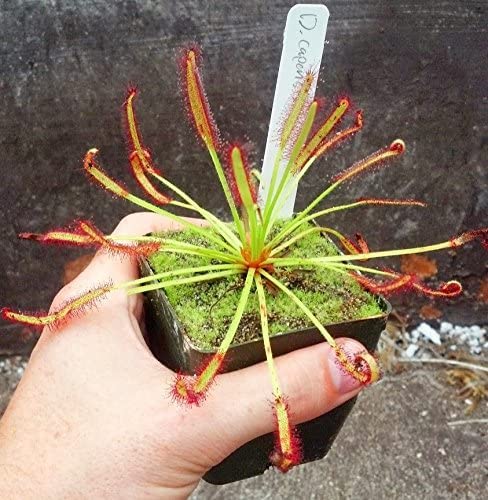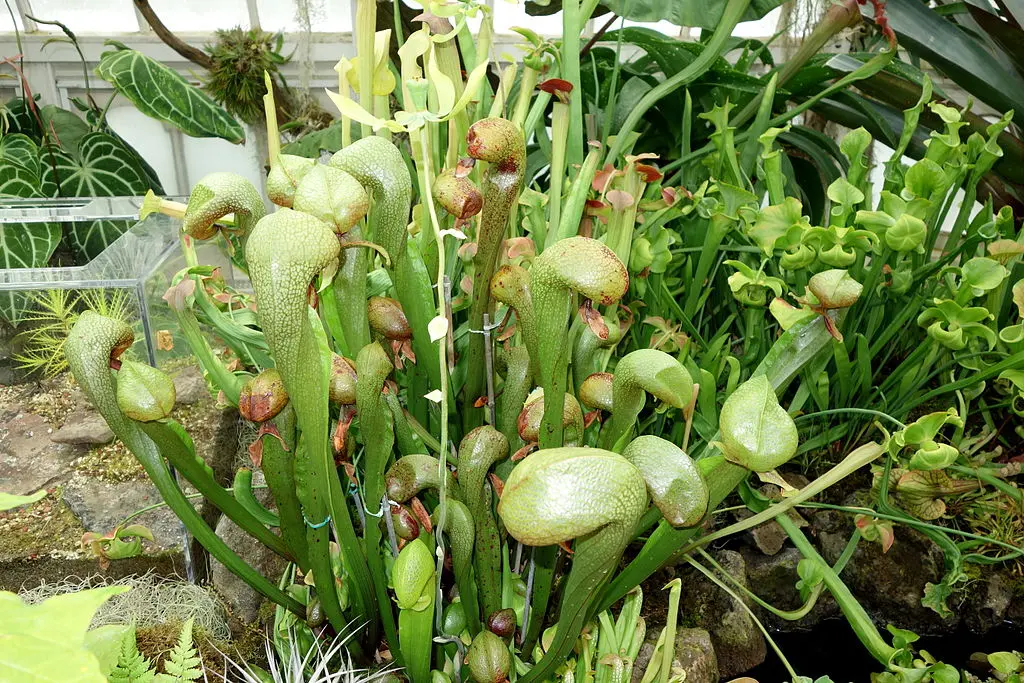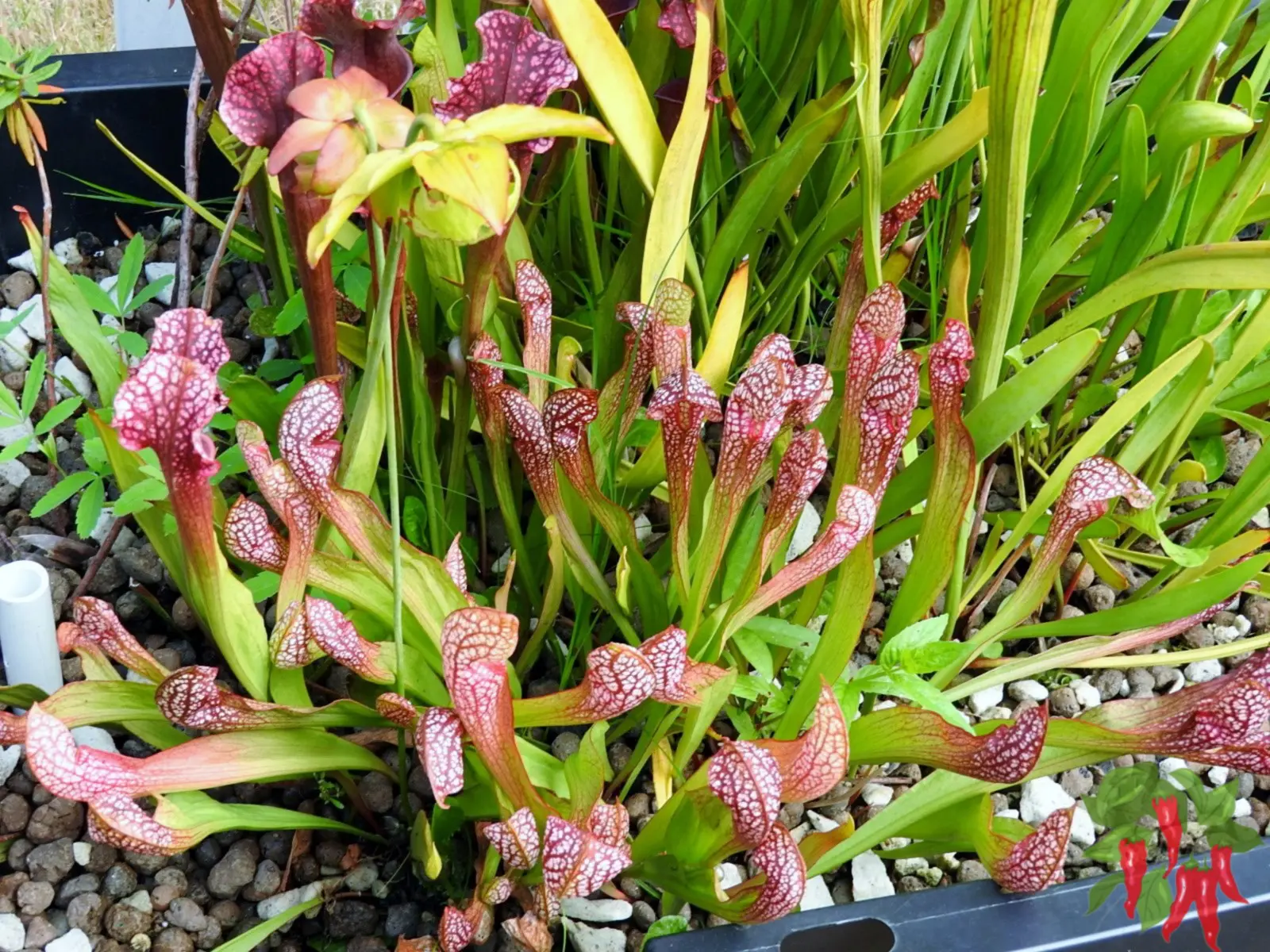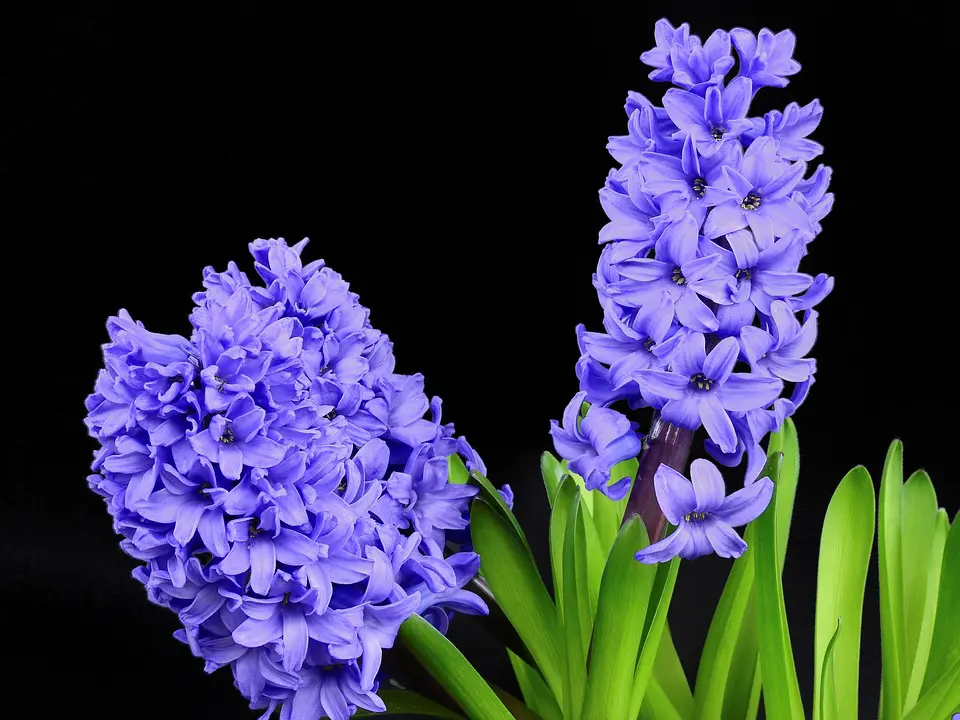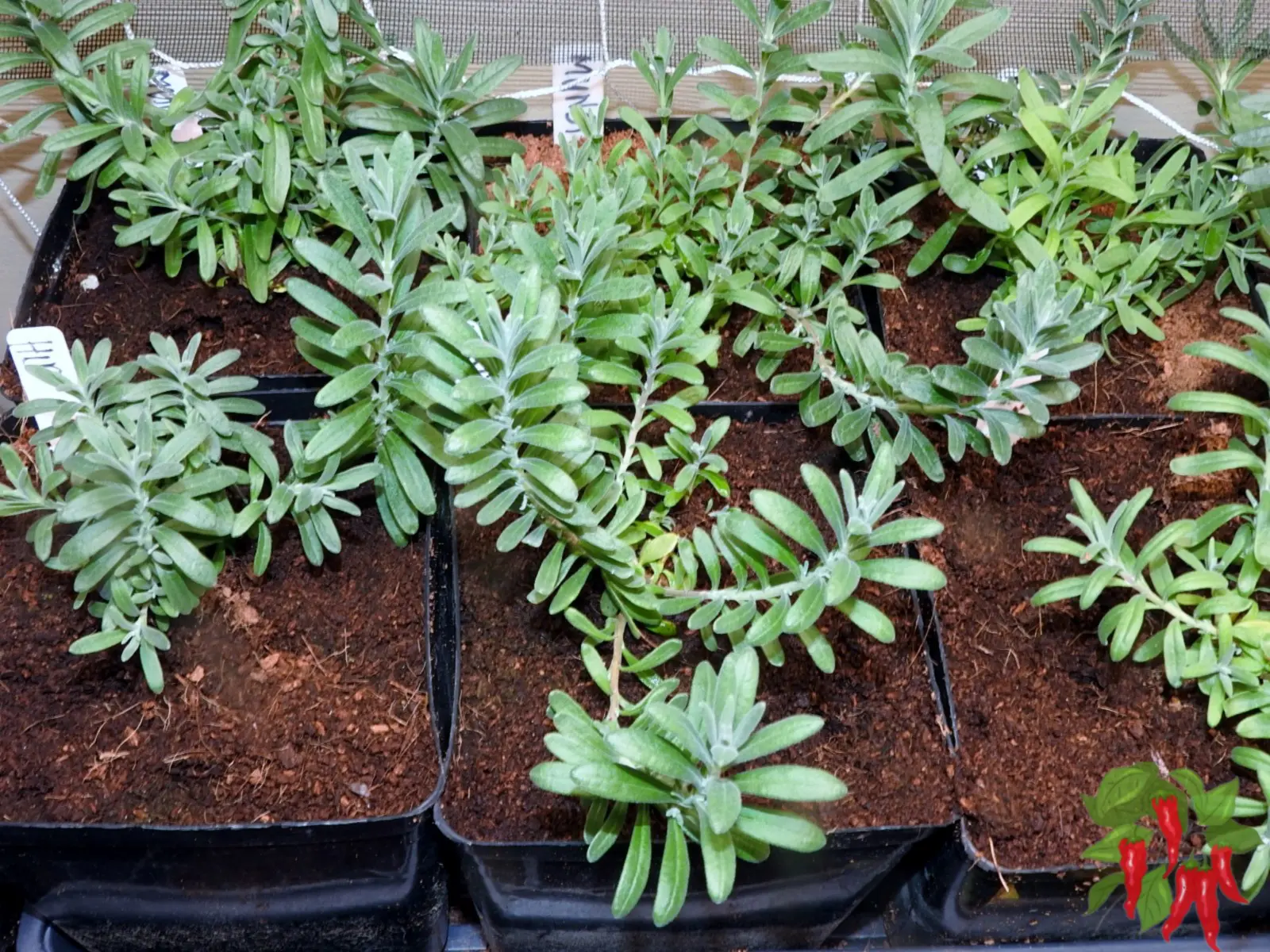This post contains affiliate links. If you buy something from one of our links we may earn a commission. Thanks
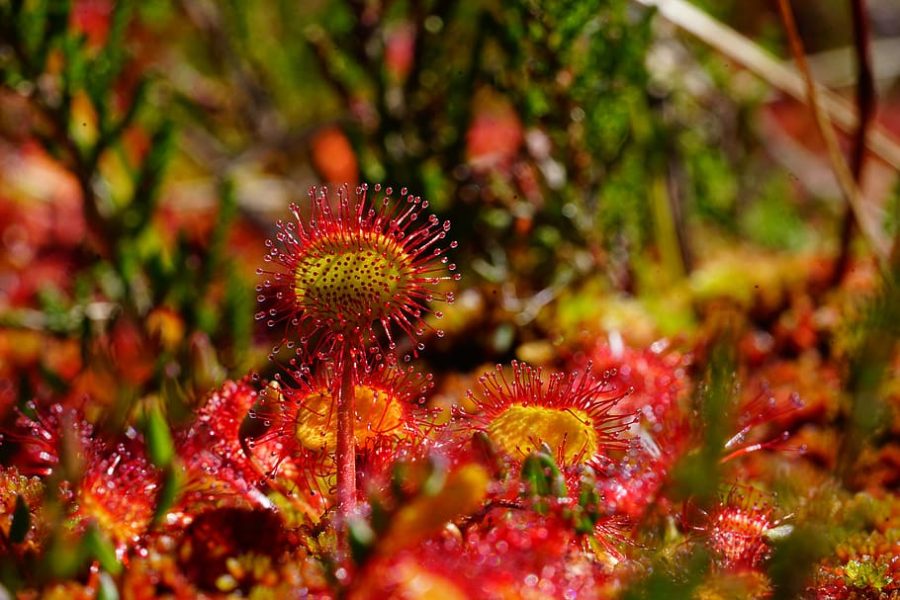
Discover the magic of carnivorous plants with our guide on how to grow sundews indoors. Dive in and turn your home into a tropical carnivorous haven!
To grow sundews indoors, provide them with a mix of peat moss and sand or perlite, ensure consistent moisture using distilled or rainwater, and place them in a spot with full sun or bright indirect light. Maintain a warm, humid environment for optimal growth.
How to Grow Sundews Indoors
Ever thought about adding a touch of the wild to your living room? Well, learning how to grow sundews indoors might just be the exciting project you’ve been looking for!
These captivating carnivorous plants are not only a visual treat but also a fun way to dive into the world of exotic gardening.
Sundews, scientifically known as Drosera capensis, are fascinating carnivorous plants that have captivated plant enthusiasts worldwide.
Their unique trapping mechanism and exotic appearance make them a popular choice for indoor gardening.
In this guide, we’ll delve into the world of sundews and explore how to grow them successfully indoors.
You can find live Sundew plants on Amazon
Sundew Characteristics
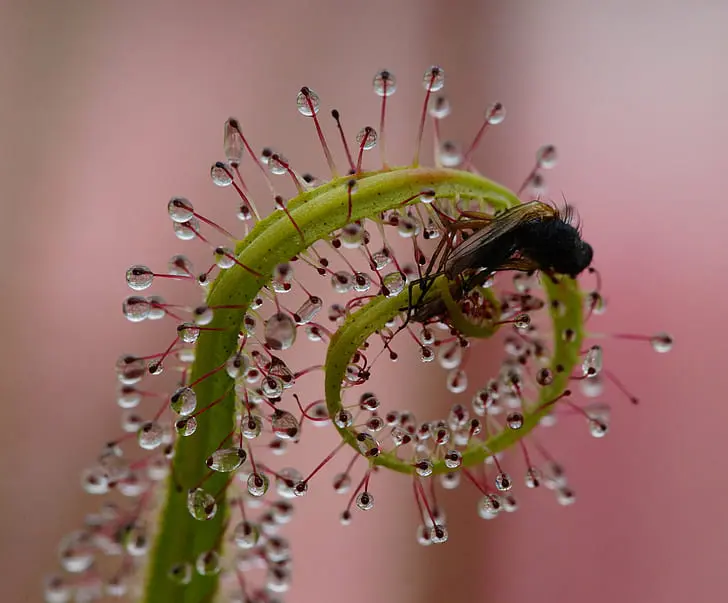
Sundews are a mesmerizing gem in the vast world of carnivorous plants.
With their glistening, dew-covered tendrils ready to ensnare unsuspecting insects, they truly are nature’s little trappers.
Their unique features, from the sticky tentacles to the way they slowly wrap around their prey, set them apart from other houseplants.
This intriguing behavior, combined with their diverse range of species and vibrant colors, makes sundews a topic of interest for many plant enthusiasts and curious minds alike.
Whether you’re a seasoned gardener or just starting out, the world of sundews promises a captivating journey.
Drosera, which is commonly known as the sundews, is one of the largest genera of carnivorous plants, with at least 194 species. These members of the family Droseraceae[1] lure, capture, and digest insects using stalked mucilaginous glands covering their leaf surfaces. The insects are used to supplement the poor mineral nutrition of the soil in which the plants grow. Various species, which vary greatly in size and form, are native to every continent except Antarctica. According to Wikipedia. https://en.wikipedia.org/wiki/Drosera
Description of sundew species and sub-species:
Sundews belong to one of the largest genera of carnivorous plants, with over 90 separate species.
These species further branch out into many sub-species with descriptive names like King Sundews and Rosetted Sundews.
Appearance:
Their green leaves can be narrow, oval, or round, depending on the species.
The leaves are adorned with glands that secrete mucus, acting as a trap for unsuspecting insects.
Carnivorous behavior:
Sundews lure insects with their scent. Once an insect is trapped in the sticky mucus, the leaf curls up to digest its prey, a process that takes between four and six days.
Sundew Natural Habitat
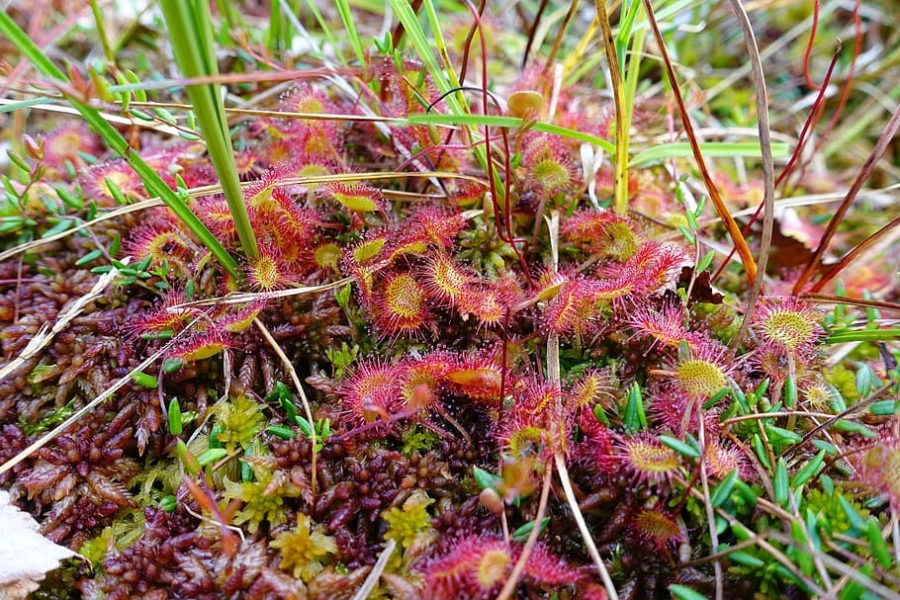
If you’re keen on replicating the beauty of sundews in your indoor space, it’s essential to first get acquainted with their natural habitat.
Just like how we thrive in our comfort zones, sundews too have their preferred spots in the wild.
Originating from tropical and sometimes even temperate regions, these plants have evolved to adapt to specific conditions.
From the misty bogs of Australia to the damp fens of South Africa, sundews have made their mark in various terrains.
By understanding and mimicking these natural conditions, you can create the perfect sanctuary for your sundew right at home.
It’s all about giving them a touch of the wild, indoors!
Tropical regions:
Sundews, with their captivating allure, predominantly call the tropical regions of Australia and South Africa their home.
In these areas, the climate provides them with the warmth and humidity they crave.
Australia, with its diverse ecosystems, offers a variety of habitats for different sundew species.
Meanwhile, South Africa’s unique topography and climate conditions make it another hotspot for these plants.
It’s not just the climate, but also the rich biodiversity of these regions that support the sundews’ carnivorous lifestyle.
Typical growth areas:
When picturing the natural habitats of sundews, imagine serene bogs and fens.
These wetland areas, often filled with a mix of water and organic matter, provide the perfect setting for sundews.
The soil in these areas is typically acidic and sandy, which ensures good drainage while retaining the necessary moisture.
This unique soil composition, combined with the constant availability of small insects, makes bogs and fens the ideal playground for sundews.
Their roots anchor into this soil, drawing nutrients while their sticky tentacles above do the job of catching their meals.
It’s this harmonious balance of soil and environment that supports their growth and carnivorous behavior.
Growing Sundews Indoors
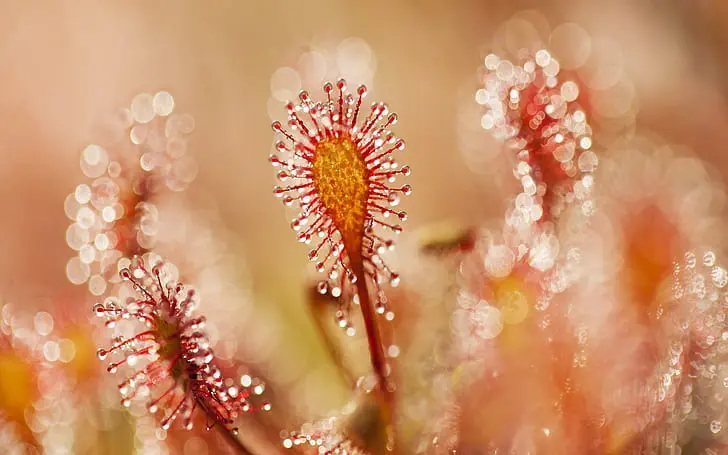
The allure of tropical plants often lies in their exotic charm, and sundews are no exception.
These fascinating carnivorous plants, with their dew-laden tendrils and insect-trapping prowess, might seem like they belong only in the wild terrains of distant lands.
However, the truth is, with a sprinkle of dedication and the right environment, they can be nurtured right in your living room.
Imagine having a mini tropical bog or fen in a pot, where the sundew thrives, capturing tiny insects and adding a unique aesthetic to your indoor space.
With the right care, not only can you recreate a slice of their natural habitat, but you can also witness their captivating behavior up close.
It’s all about understanding their needs and giving them a cozy corner in your home where they can flourish and showcase their exotic beauty.
Sundew Varieties and Characteristics Table
| Variety | Origin | Light | Soil | Water | Temperature |
|---|---|---|---|---|---|
| Drosera capensis (Cape Sundew) | South Africa | Full sun to partial shade | Peat moss and sand or perlite | Distilled or rainwater, constantly moist | 60-80°F (15-27°C) |
| Drosera spatulata (Spoon-leaved Sundew) | Australia, New Zealand, Southeast Asia | Full sun | Peat moss and sand or perlite | Distilled or rainwater, moist | 55-80°F (13-27°C) |
| Drosera rotundifolia (Round-leaved Sundew) | Northern Hemisphere | Full sun | Sphagnum moss or peat and sand | Distilled or rainwater, moist | 50-75°F (10-24°C) |
| Drosera binata (Fork-leaved Sundew) | Australia and New Zealand | Full sun | Peat and sand | Distilled or rainwater, constantly moist | 60-85°F (15-29°C) |
| Drosera aliciae (Alice Sundew) | South Africa | Full sun to partial shade | Peat moss and sand or perlite | Distilled or rainwater, moist | 60-80°F (15-27°C) |
| Drosera filiformis (Thread-leaved Sundew) | Eastern North America | Full sun | Peat and sand | Distilled or rainwater, moist | 55-80°F (13-27°C) |
Suitable containers:
Choosing the right home for your sundew is the first step in ensuring its growth and well-being.
While pots are a common choice, terrariums are often the go-to for many sundew enthusiasts.
Why? Terrariums act like mini-greenhouses, creating a controlled environment that retains humidity, which is essential for sundews.
This enclosed space mimics the moist conditions of their natural habitat, ensuring the plant remains hydrated and happy.
Plus, terrariums can be a decorative addition to your space, allowing you to create a mini ecosystem that’s both functional and aesthetically pleasing.
You don’t need to buy an expensive terrarium though. These plants can be kept in an empty 5 or 10-gallon fish tank.
Light requirements:
Sunlight is the lifeblood of plants, and sundews are no exception. In their natural habitat, they bask in the full glory of the sun.
When bringing them indoors, it’s essential to replicate this as much as possible.
A sunny windowsill where they can soak up rays for several hours is ideal.
But don’t fret if you don’t have a sun-drenched spot; sundews are adaptable. They can manage with indirect sunlight, but ensure they get a good dose daily.
It’s all about finding that sweet spot where they get enough light without getting scorched.
Alternatively, you can put an aquarium LED on top of your fish tank or provide a light near them.
Soil composition: Soil and growing sundews indoors
The foundation for a thriving sundew lies in its soil.
A blend of vermiculite, perlite, peat moss, and long fiber sphagnum, topped with a bit of potting soil, creates an environment that sundews adore.
Long fiber sphagnum, in particular, is a favorite among sundew growers.
It not only retains moisture effectively but also provides the necessary aeration, ensuring the roots don’t become waterlogged.
The acidity from the peat moss and sphagnum mirrors the conditions of their natural boggy habitats.
When you’re preparing the potting mix for your sundew, think of it as crafting a gourmet dish tailored to its unique preferences.
This mix ensures the plant has everything it needs to grow strong and healthy. Sundew plant care means occasionally topdressing soil and growing sundews are also helpful.
Watering:
Water is crucial for sundews, but it’s not just about quantity; it’s also about quality.
Sundews prefer their soil to be consistently moist, mimicking the wet conditions of bogs and fens.
But tap water with its minerals can be harmful to them. Instead, opt for distilled water or collected rainwater.
These options ensure that the water is pure and free from any minerals that might hinder the plant’s growth.
Temperature and Humidity:
If sundews had a favorite weather report, it would be warm and humid.
These conditions are reminiscent of their tropical origins. While they’re resilient, temperatures below 50°F aren’t ideal for them.
And if the mercury dips below 70°F for extended periods, it’s a sign to bring them indoors or provide some warmth.
Pair this with a humid environment, and you’ve got the perfect setting for your sundew to thrive.
Whether you achieve this through misting, terrariums, or humidifiers, ensuring the right temperature and humidity levels will see your sundew flourish.
Potential Challenges
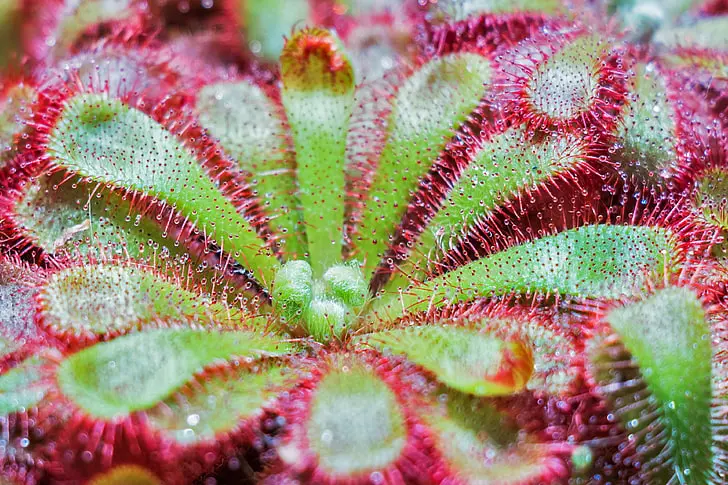
Every plant has its quirks, and sundews are no exception. While they bring a touch of the exotic to your home, they also come with their own set of challenges.
Just like a pet or any other household member, they have specific needs and occasional troubles.
Sundews, with their unique carnivorous nature, might face issues that other houseplants don’t.
Being aware of these challenges and understanding their signs can help you address them promptly.
This proactive approach ensures that your sundew remains healthy and continues to be the captivating centerpiece of your indoor garden.
Whether it’s a pesky insect or a watering mishap, knowing what to look out for is half the battle won.
Let’s delve into some of these potential challenges and how to tackle them.
Common pests and diseases:
It’s a bit ironic, isn’t it? Sundews, the insect trappers, can sometimes fall prey to pests themselves.
While they’re busy catching gnats and other small insects, they might be vulnerable to some common plant pests.
Aphids, spider mites, and even scale can sometimes find their way to your sundew.
Additionally, fungal diseases, often due to excessive moisture, can be a concern.
It’s essential to keep a vigilant eye on your plant. Look for any discoloration, wilting, or unusual spots.
Regularly inspecting your sundew, especially the underside of the leaves, can help you spot these invaders early on.
Early detection is crucial, as it allows you to take action before the issue escalates, ensuring your plant remains in prime condition.
Watering issues:
Watering might seem like the simplest task, but it’s a delicate balance when it comes to sundews.
These plants love moisture, but there’s a fine line between just right and too much.
Over-watering can lead to root rot, a condition where the roots become waterlogged and start decaying.
On the other hand, under-watering can dry out the plant, causing it to lose its vigor.
The key is to monitor the soil’s moisture levels. The soil should feel moist to the touch but not waterlogged.
If you notice the top layer of the soil starting to dry out, it’s time for a drink.
Conversely, if the soil feels too wet or you notice water pooling at the bottom of the container, it’s a sign to cut back.
Remember, it’s all about finding that perfect balance to keep your sundew happy and hydrated.
Benefits of Growing Sundews Indoors
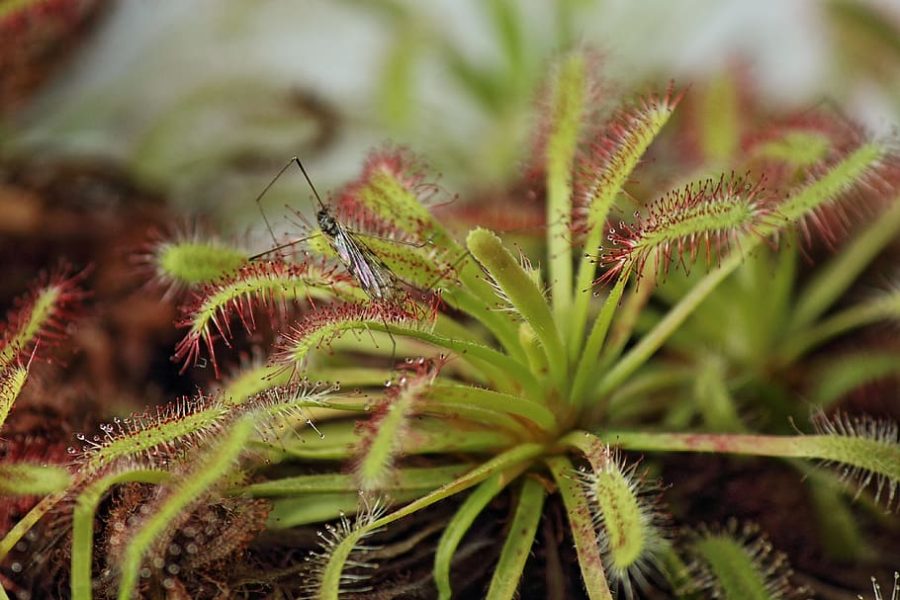
Sundews are more than just another plant to add to your indoor collection.
They bring with them a myriad of benefits that go beyond their mesmerizing dew-covered tendrils.
Growing sundews indoors not only offers you a front-row seat to nature’s wonders but also provides practical advantages that can make your indoor gardening experience even more rewarding.
Natural insect control:
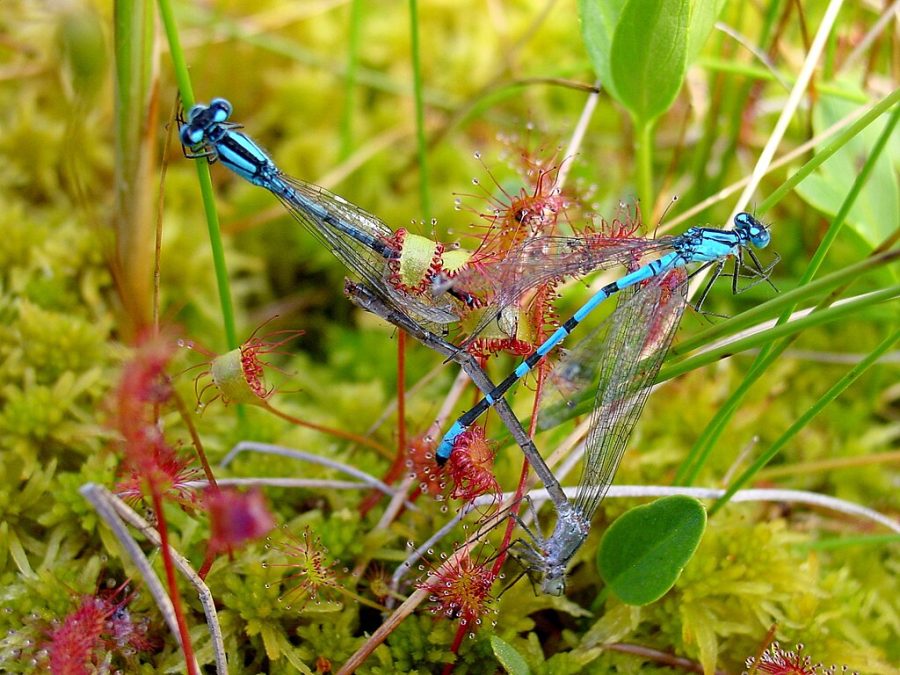
Tired of those pesky gnats or fruit flies that seem to always find their way into your home?
Sundews are here to the rescue! With their sticky tentacles, they lure, trap, and digest these small insects, acting as a natural pest control solution.
It’s nature’s way of keeping things in balance. By having a sundew in your living space, you’re essentially employing a tiny, diligent security guard who’s always on the lookout for unwanted insect guests.
And the best part? It’s all done without any chemicals or sprays, making it an eco-friendly solution to common household pests.
Aesthetic appeal:
Sundews are undeniably captivating. Their intricate design, combined with their unique insect-trapping behavior, makes them a standout in any indoor garden.
Whether it’s the glistening dewdrops that catch the light or the slow, deliberate movement as they wrap around their prey, sundews are bound to draw attention.
They add a touch of the exotic, transforming an ordinary space into a mini tropical haven.
And let’s not forget the conversations they spark! Guests and family members will undoubtedly be intrigued, making your sundew not just a plant, but also a story waiting to be told.
Sundew Plant Care Indoor FAQs
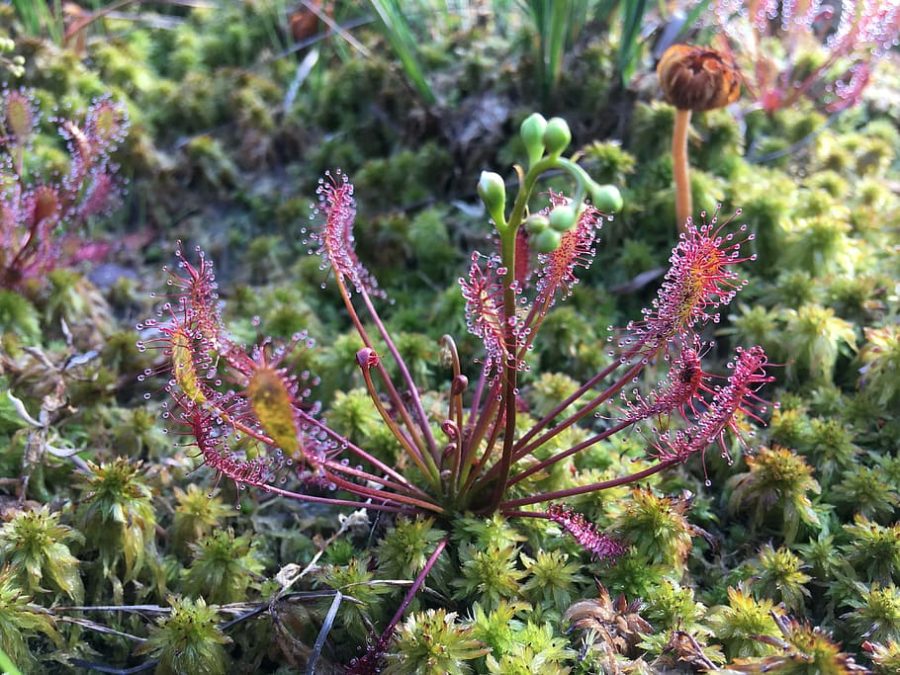
Sundews, with their unique characteristics and behaviors, often pique the curiosity of plant enthusiasts and novices alike.
Whether you’re considering adding one to your indoor garden or are already a proud sundew parent, you might have a few questions about their care and requirements.
Let’s dive into some of the most frequently asked questions about growing sundews indoors and shed some light on these captivating carnivorous plants.
Q: How often should I water my sundew plant?
A: Sundews love moisture, and it’s essential to ensure their soil doesn’t dry out.
Depending on your home’s environment and humidity levels, this might mean giving them a drink every couple of days.
It’s always a good idea to touch the soil and check its moisture level. If it feels dry on top, it’s time to water.
Q: Can sundews survive in low light conditions?
A: Sundews have a penchant for sunlight. In their natural habitat, they bask in the full glory of the sun.
However, when grown indoors, they’ve shown adaptability.
While they thrive best in full sun, they can manage and still grow healthily with indirect sunlight, provided they receive several hours of it daily.
Just ensure they get a good dose of light, and they’ll be content.
Q: What type of soil is best for sundews?
A: Sundews prefer a specific soil mix that mimics their natural habitat. A blend of vermiculite, perlite, and peat moss, combined with a touch of potting soil, creates the perfect environment for them.
This mixture ensures good aeration while retaining the necessary moisture, offering the acidity and nutrients that sundews love.
Q: How do I increase humidity for my indoor sundew?
A: Sundews thrive in humid conditions. If you feel the air in your home is too dry, there are several ways to boost humidity for your plant.
Terrariums are a great option as they create a mini-enclosed ecosystem.
Alternatively, frequent misting with a spray bottle can help, as can placing a dish of water near the plant.
These methods ensure your sundew gets the tropical-like humidity it craves.
Q: Are there different species of sundews I can grow indoors?
A: Absolutely! The world of sundews is vast and diverse. There are several species and sub-species, each with its unique characteristics, suitable for indoor growth.
From the popular Drosera capensis (Cape Sundew) to the intriguing Drosera spatulata (Spoon-leaved Sundew), there’s a sundew out there waiting to grace your indoor space.
Research and choose one that aligns with your aesthetic and care preferences.
Sundew Plant Care Conclusion
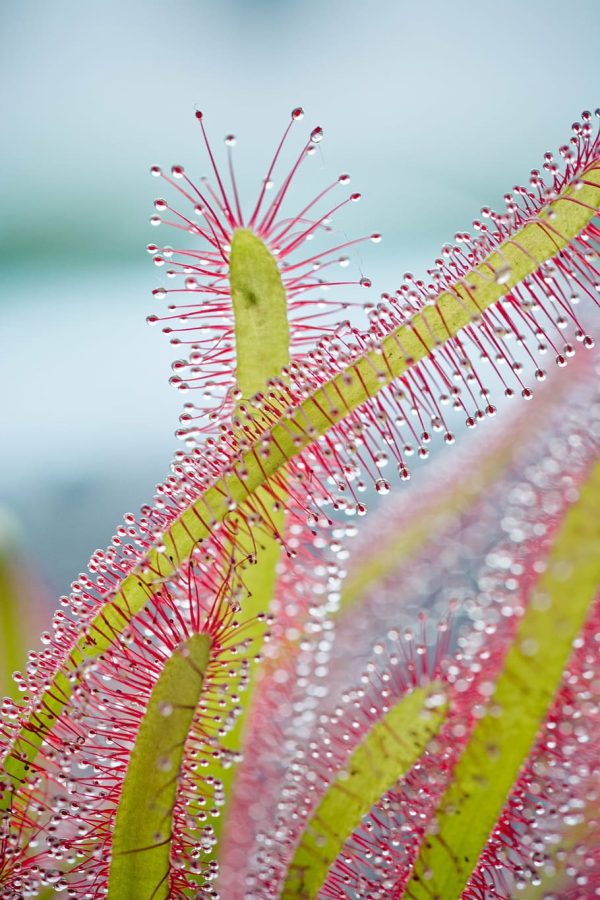
As we journey through the captivating world of sundews, it’s evident that these unique carnivorous plants offer more than just aesthetic appeal.
They bring a slice of the wild right into our homes, teaching us patience, care, and the wonders of nature.
But before we wrap up, let’s touch on a couple of final thoughts to inspire and encourage you in your sundew-growing journey.
Embrace the Learning Curve:
Every plant, especially one as unique as the sundew, comes with its set of challenges and rewards.
There might be times when you feel unsure or make a misstep in its care.
Remember, gardening, at its core, is a continuous learning process. Each challenge presents an opportunity to understand your plant better and refine your care techniques.
Celebrate the small victories, like the first insect your sundew catches or a new leaf sprouting, and know that with time and experience, you’ll become a sundew pro!
Share the Wonder:
The beauty and intrigue of sundews are too good to keep to yourself.
Share your passion and knowledge with friends, family, or fellow plant enthusiasts.
Whether it’s through photos, conversations, or even gifting a sundew plant to someone, spreading the joy of these carnivorous wonders can inspire others to embark on their own plant journey.
Plus, there’s nothing quite like the shared excitement of watching a sundew in action, capturing its prey.
It’s a reminder of the intricate and fascinating dance of nature, right in our living spaces.

